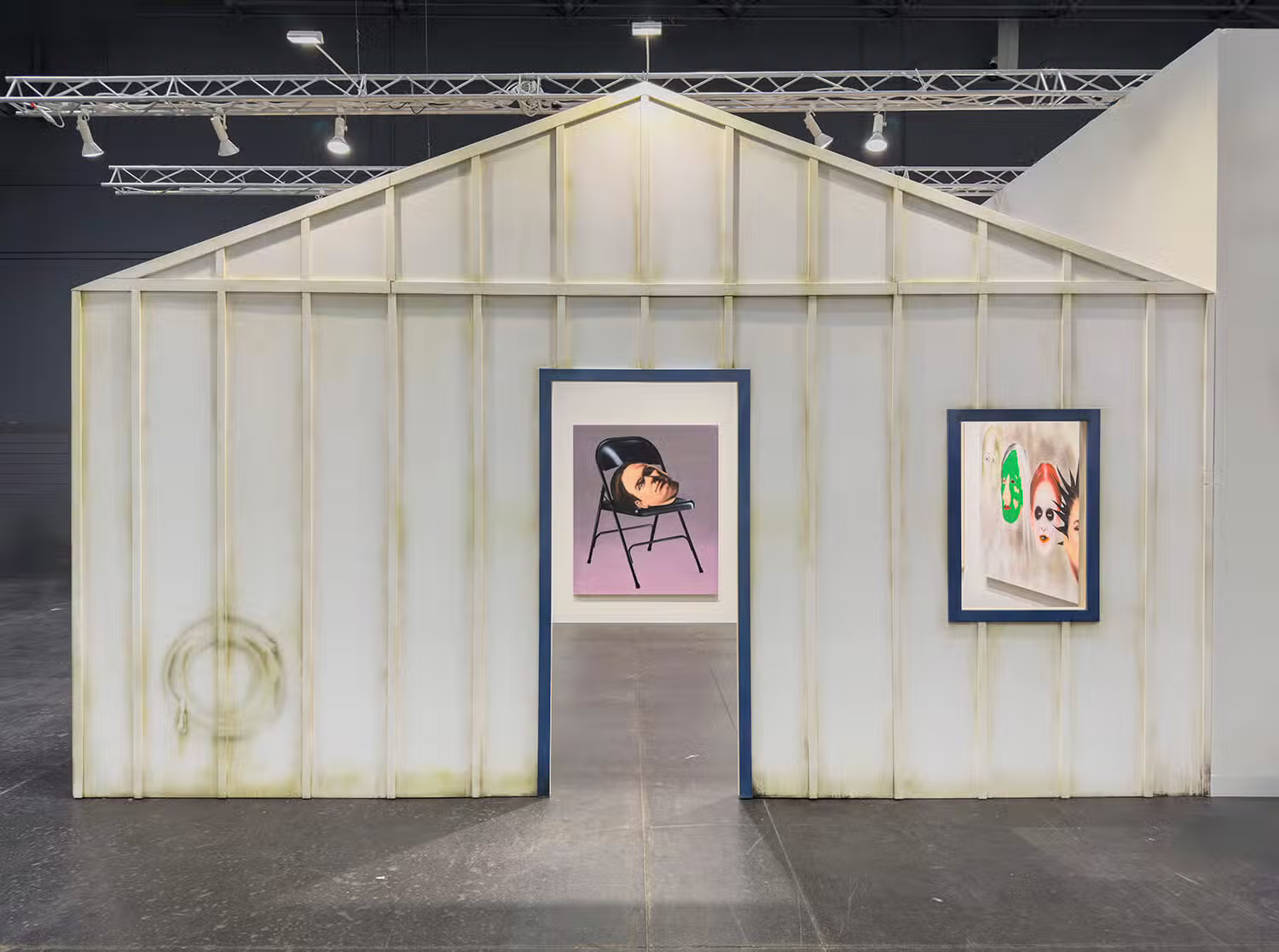
Installation view of Aaron Elvis Jupin at Moskowitz Bayse. Image courtesy of Moskowitz Bayse.
There are a lot of fairs on the art world’s calendar, from Los Angeles to Madrid, Paris, and Seoul. None are more fun for seeing and being seen than The Armory Show in New York—not even Art Basel Miami Beach, which is so gaudy, bloated, and cutthroat that any participation leaves one craving a shower. For the past 30 years, the Armory has dubbed itself New York’s hometown fair. The art world, in turn, has dubbed this fair the “first day of school,” where artists, collectors, gallerists, and writers all return after summer vacation.
The Armory opened for such VIPs yesterday. It remains on view at the Javits Center all weekend. Even though crowds were thin in the early afternoon, the hall filled up by the vernissage at 5 p.m. This kickoff had everything a girl could want from the first day of school—old friends, new friends, and the perfunctory adrenaline-fueled scurry away from someone who is not a friend. There were art stars afoot, too, including Andres Serrano and the ever-demure Miles Greenberg.
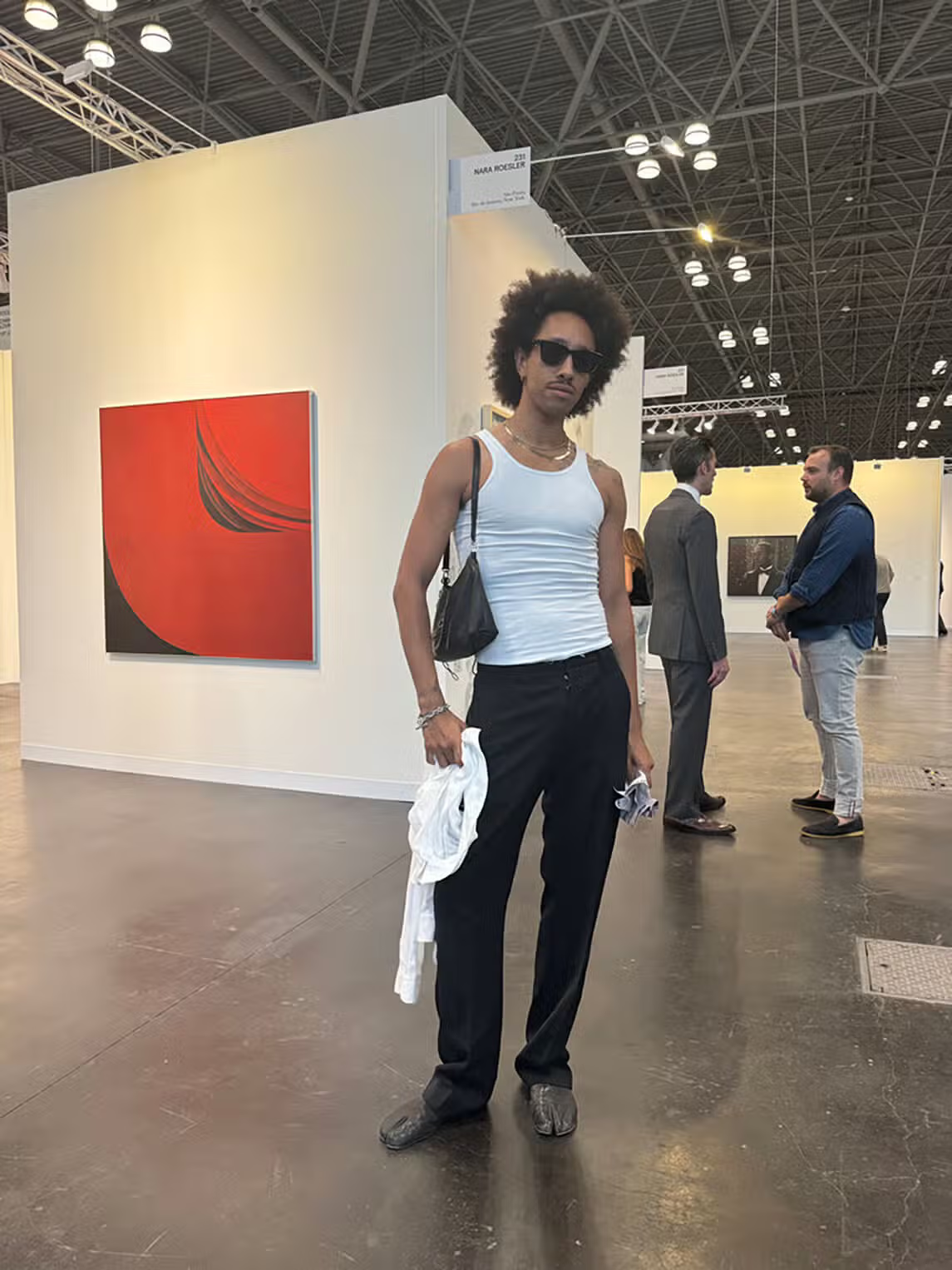
Miles Greenberg. Photography by Vittoria Benzine.
Despite the luminaries present, one thing missing from this year’s Armory is spectacle. Not to say there aren’t any—Los Angeles-based gallery Moskowitz Bayse constructed a whole house around their presentation (booth P43), and Berlin-based LEVY Gallerie (booth S14) built a hall of mirrors.
But usually, the big booths near the entrance—which constitute the most expensive real estate at the fair—offer ostentatious, eye-catching artworks in order to grab buyers on their way inside. The first sight guests will see upon entering this year’s edition of the Armory, however, is a brainy little minimalist abstract sculpture by Tomie Ohtake offered at Brazilian gallery Nara Roesler, with an Isaac Julien photograph behind it.
Continue onward, and you’ll find a lot of photography on display throughout this year’s four sections and 235 booths, including illuminated “fireboxes” featuring First Nations womxn by Hunkpapa Lakota artist Dana Claxton at Vancouver’s Macaulay + Co. (booth S2), climate change-driven images of the American south by Miami-based Anastasia Samoylova at Berlin gallery Wentrup (booth 211), and big black-and-white portraits by Cameroonian photographer Samuel Fosso at New York-based gallery Yossi Milo (booth 125). Photography’s proliferation is a bit surprising, since the medium’s not supposed to do well during bear markets.
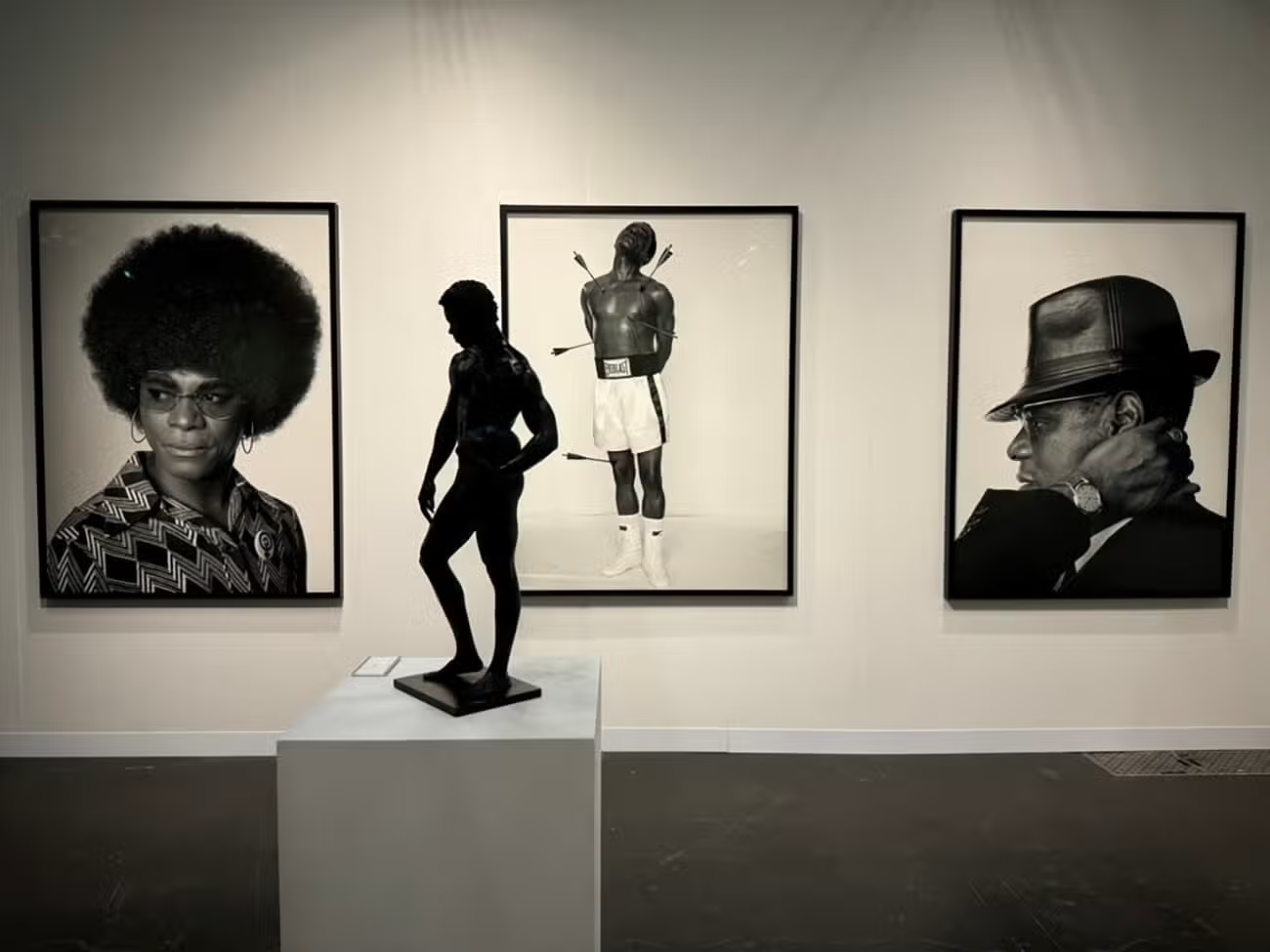
Installation view of Samuel Fosso at Yosi Milo. Photography by Vittoria Benzine.
Given this bear market, it makes sense that spectacles were in shorter supply up front—save for Tschabalala Self’s stunning solo presentation with New York-based Two Palms (booth 219), featuring sculptural works of cast and pigmented paper (some freestanding, some wall hanging) in the shape of bodega staples like Tide and 7UP, all set against a mesmerizing mural. While art prices are down, the booths I spoke with all reported solid sales for the fair’s first day. Numerous galleries offered smaller works, like the watercolors tiling a wall amongst Masami Teraoka’s solo show with San Francisco’s Catharine Clark Gallery (booth S8), and the little pigeons populating the group presentation by India-based Experimenter's Armory debut (booth 308).
Instead, Victoria Miro (booth 229) staked out a spot right by the entrance and staged a spectacular anti-spectacle. Even though the Whitney Biennial just closed, New York is obviously still especially enamored of Isaac Julien this season. Amongst the London-based gallery’s extensive show of Julien’s photos, it even set up an unassuming, dark, mirror-lined theater screening the artist’s two-channel film Once Again… (Statues Never Die) (2022). Fairs are typically terrible places to see art, because there’s so much of it. But, this installation successfully encouraged slow looking. To my delight, my friends and I were asked to leave by a guest during one of my visits because our catchup was interrupting their viewing experience.
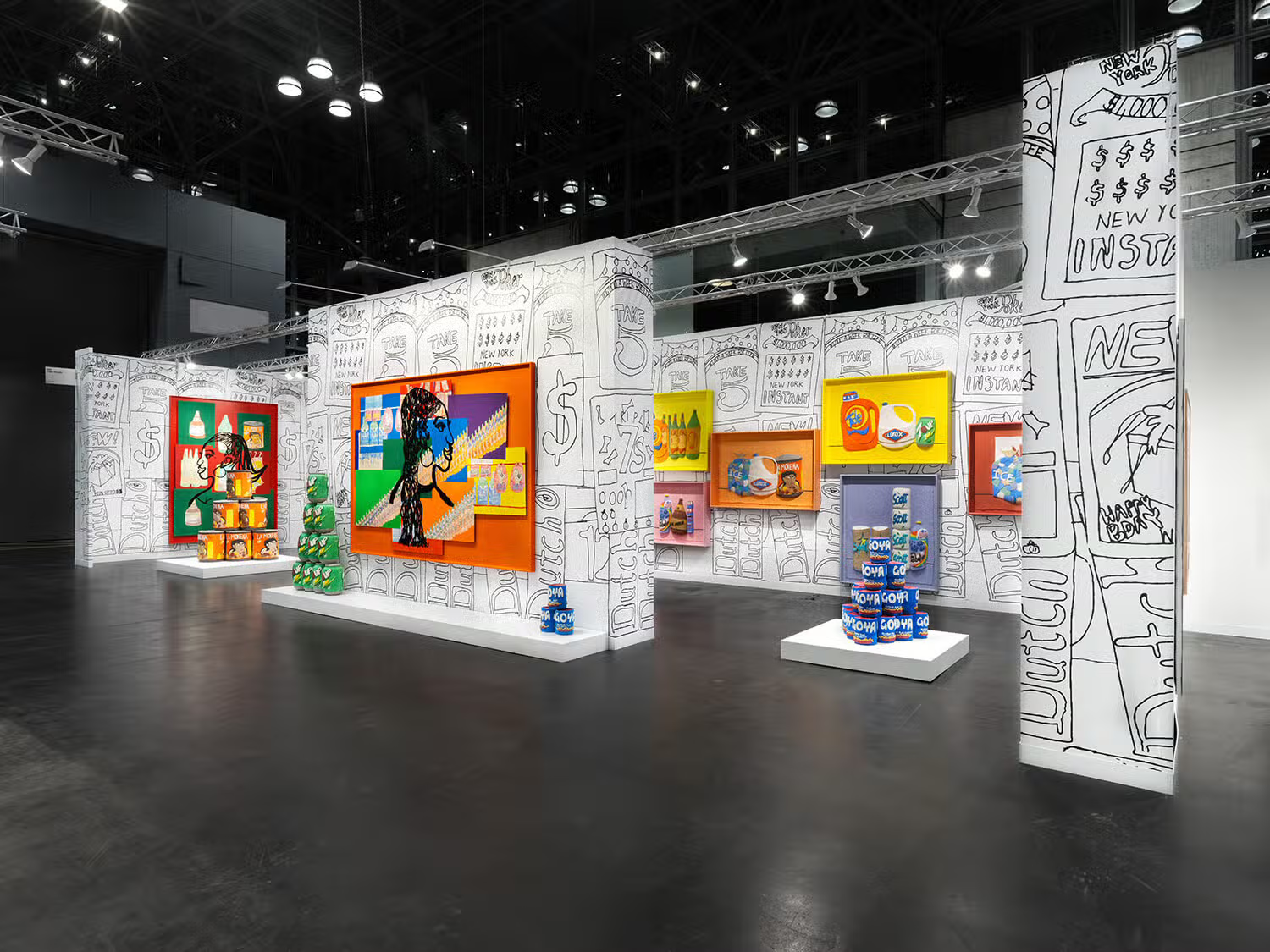
Installation view of Tschabalala Self at Two Palms. Image courtesy of Two Palms.
Another trend, if you’re into that kind of thing, appears to be geometric abstraction, which is absolutely everywhere at this fair. There are Brooklin Soumahoro’s vibrant patterns of oil on linen at Rodolphe Janssen (booth S11), Kamrooz Aram’s mixed-media floral puzzles at Nature Morte (booth 203), and bold organic shapes within the works of acrylic and tufted wool by the duo behind Native Art Department International, who are garnering institutional interest at Patel Brown (booth P32).
Art fairs are really about discovery—in terms of artists, and people, too. I was drawn to Angela Heisch’s transcendental nautilus Sponge Landing, 2024, at London-based Pippy Houldsworth Gallery (booth 113), then stumbled upon another work from this same, luminous series at the international Grimm gallery (booth 302). Heisch, I realized, must be having a moment. But the real magic arrived, as it always does on school days, in the girl’s bathroom.
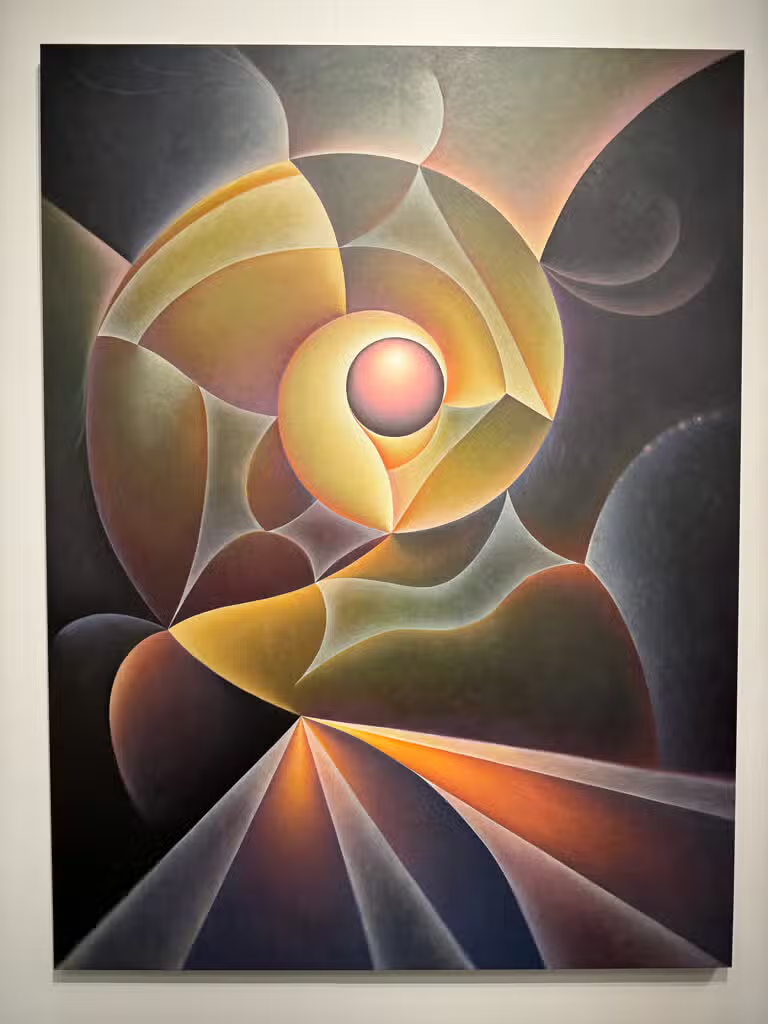
Angela Heisch, Sponge Landing, 2024. Photography by Vittoria Benzine.
While washing my hands, I eyed a half-empty wine glass by the sink and joked to myself that six years ago, before I stopped drinking and started writing, I would’ve simply hung out there, getting tipsy off all the leftover drinks for free. Do not tell her, I thought as I glanced at the young woman next to me, but I couldn’t hold it in. We hit it off, then shared a spliff while the Armory’s first day ended.
As attendees poured out of the building, my new friend and I talked as much about the people we saw on the fair’s first day as we did about the art as we joined in with the crowd heading to the next event, and the next. And with that, the art world is back in session.
The Armory Show runs through September 9, 2024, at the Javits Center, 429 11th Avenue, New York, NY.











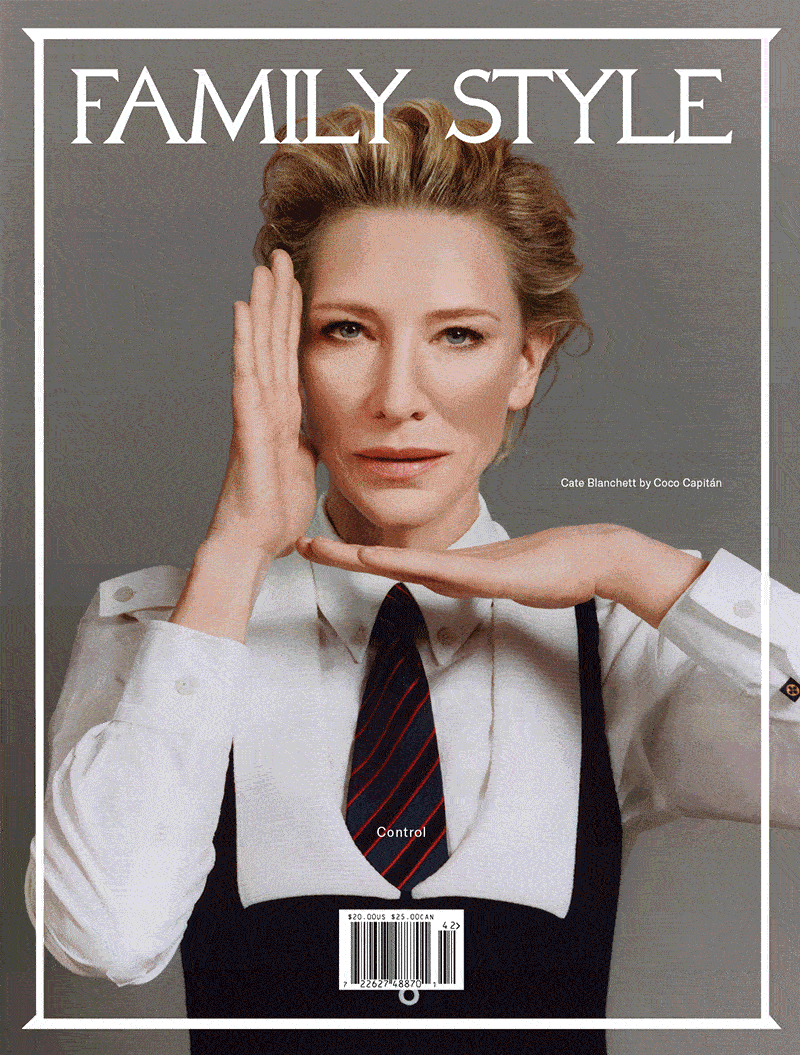


.avif)

